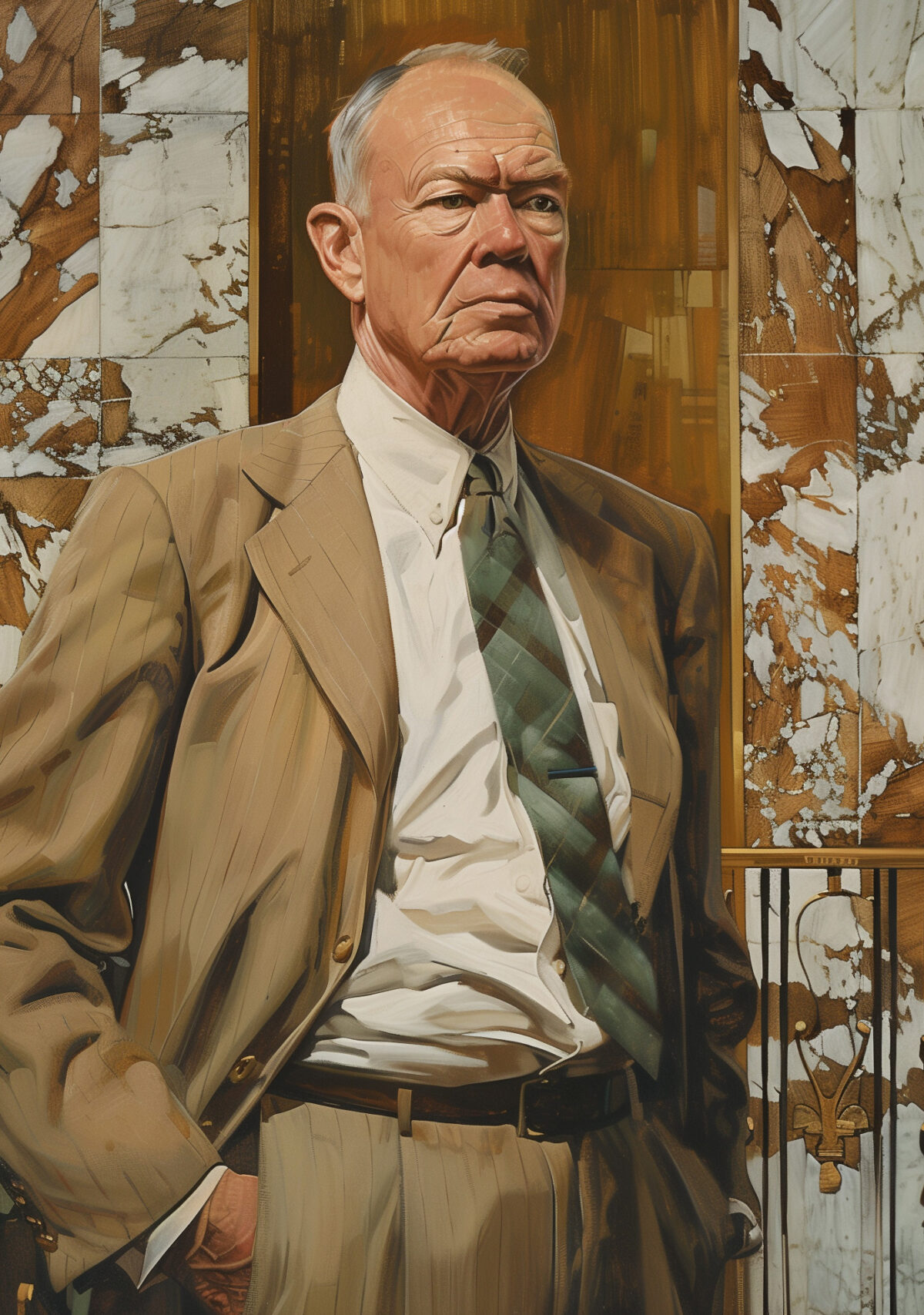Not many lieutenant colonels would have dared blow the whistle on Gen. George S. Patton Jr.—but then not many lieutenant colonels had seen what Judah Nadich had, at least not with eyes that remained so undulled to moral outrage and yet still so alive to hope.
It was a half-year after the German surrender, and what Nadich found outside of Munich seemed simply incomprehensible. “The conquered Germans,” Nadich wrote, “had complete freedom.” Returning German civilian refugees were being moved into the best open apartment blocks and other undamaged buildings. But thousands of Jewish survivors of the Nazi death camps remained behind barbed wire— virtual prisoners, forbidden to leave the “displaced persons” camp where they were now held, guarded by armed troops under Patton’s command.
If it was unusual for lieutenant colonels to throw their weight around, it was more unusual still for chaplains; but Nadich had already demonstrated a capacity to take charge of whatever unexpected situations the war threw his way. Having received both a master’s degree in history from Columbia and his ordination as a rabbi in 1936, Nadich enlisted as a chaplain shortly after Pearl Harbor, and within months was on his way to England as the army’s first Jewish chaplain in the European theater. In Paris after the liberation, Nadich wondered how to hold a Passover Seder for six thousand Jewish troops, and solved the problem by commandeering the largest nightclub on the Champs Élysées. To help the desperate survivors of the local Jewish community, he pulled all the army strings at his disposal to provide food, small loans, and messages to relatives abroad.
In the summer of 1945, growing outrage over the treatment of Jewish “DPs” in Germany prompted President Harry S. Truman to send a prominent lawyer and expert on refugees, Earl G. Harrison, to investigate the situation. In an unusually blunt letter to Gen. Dwight D. Eisenhower, the president quoted one of Harrison’s most chilling findings: “As matters now stand, we appear to be treating the Jews as the Nazis treated them except we do not exterminate them. They are in concentration camps in large numbers under our military guard instead of SS troops. One is led to wonder whether the German people, seeing this are not supposing that we are following or at least condoning Nazi policy.”
Eisenhower acted at once, and as one of his first steps summoned Nadich to Germany as his adviser on Jewish affairs. For three months Nadich crisscrossed the American zone to gather facts firsthand.
The conditions of the Jewish DPs were not just objectively appalling—crammed into overcrowded barracks, fed little more than coffee and extremely unappetizing black bread, lacking medical treatment— but psychologically crushing; many still had nothing to wear but their Nazi-issued striped-pajama prison garb or, in some ways even worse, salvaged German SS guard uniforms. Nadich found that American occupation planners had simply assumed that any concentration camp survivors would be repatriated to their home countries within ninety days. But the Jews had no homes to return to. “Besides,” Nadich wrote, “their former lands had become one vast cemetery of their loved ones. So the Jews remained, and the army had no plans for them.”
After each inspection trip, Nadich would usually see Eisenhower personally, give him an oral report, and make recommendations—which Eisenhower invariably adopted on the spot. Within weeks conditions began to improve dramatically. The barbed wire and guards vanished, the Jewish survivors were allowed to come and go without passes, housing was improved, and rations increased.
But Patton’s command, as Nadich discovered, remained the exception. (Patton’s contempt for the Jewish victims of the Nazis was ugly and notorious; he wrote scathingly in his diary, “Harrison and his ilk believe that the Displaced Person is a human being, which he is not, and this applies particularly to the Jews, who are lower than animals.”) Nadich’s report back to Eisenhower sent the general into a fury; he summoned Patton to report to him early the next morning, which necessitated an all-night drive from Munich, and dressed him down; it was one of the last straws before Patton was removed from command of the Third Army and transferred to the “paper” Fifteenth Army.
Toward the end of his tour in Germany, Nadich made his way to Dachau. Wandering into the crematoriums, he noticed a line of ash-filled sacks—each labeled with the German word for fertilizer. “I plunged my arm into the white ash up to my elbow and rubbed the ash into the palm of my hand,” Nadich wrote, “so that I would never forget what my eyes had seen.”
Originally published in the March 2008 issue of World War II Magazine. To subscribe, click here.





